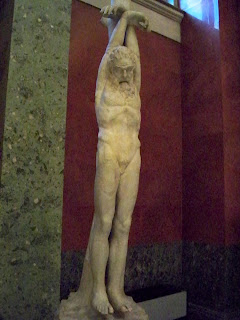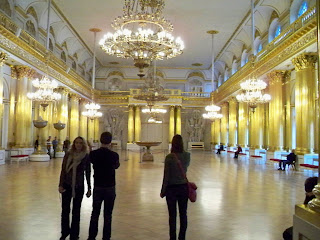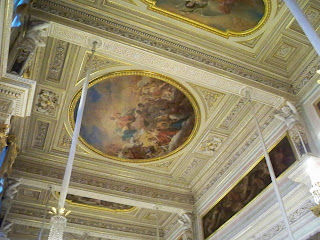
I still can't begin to figure out why I don't blend in more seamlessly when I travel . . . Here is a picture of me wandering around the backstreets of the old market area in Kasgar in far western China. I think I have a version of this picture from every place I ever visit - I never fit in. Even in Russia, according to my friend Katya, it was just so obvious that I was an American that all the beggars, pickpockets, pandhandlers - or just kind souls who wanted to talk to an American - could always instantly find me. I thought I might find it a little easier to slide along unnoticed in Russia, but even there I failed miserably. Katya, without thinking, just went down a laundry list of my failings - my coat was undone (no Russian would walk around like that apparently), I just looked "English," I was smiling way too much, I was carrying my books and notepad out in the open (Katya had me put everything in a Banana Republic shopping bag, which she inisted, somehow, made me seem more Russian), etc. During the summer I spent in India I was being absolutely beseiged by beggars or merchants looking for an easy and prosperous sale - that is, I just looked like the common international perception of an American - not very bright or shrewd and having money just falling out of his pockets. In India I eventually came up with the ingenious approach of just pretending to be from another country - many Americans do this, obviously (my friend Michelle would always put a little Canada flag on her clothes to try and "pass" as Canadian) - but I added my own unique wrinkle. I met these two European women who were travelling across India and they thought I could pass for Finnish (I'm sure that no one from Scandinavia, the Baltic states or Russia would think so, but these two were Scottish and Italian, respectively). So, after a while, to alleviate the constant pestering, when anyone would ask if I spoke English - which was always the first step to an invitation back to their shop - I'd just try and look confused and then say, "Finlandia." My thinking was that I had to choose a country that they had heard of (as compared to say Andorra or Lichtenstein), but not one that would be so common (like France or Germany) wherein they might know the language. Oddly, it worked, and I got a lot more peace and quiet. There are times when standing out is nice - when I was in Turfan in western China this gaggle of little Chinese boys started following me around as if I were the Pied Piper, and were very happy when I finally stopped and asked if I could have a picture taken with them.


























































